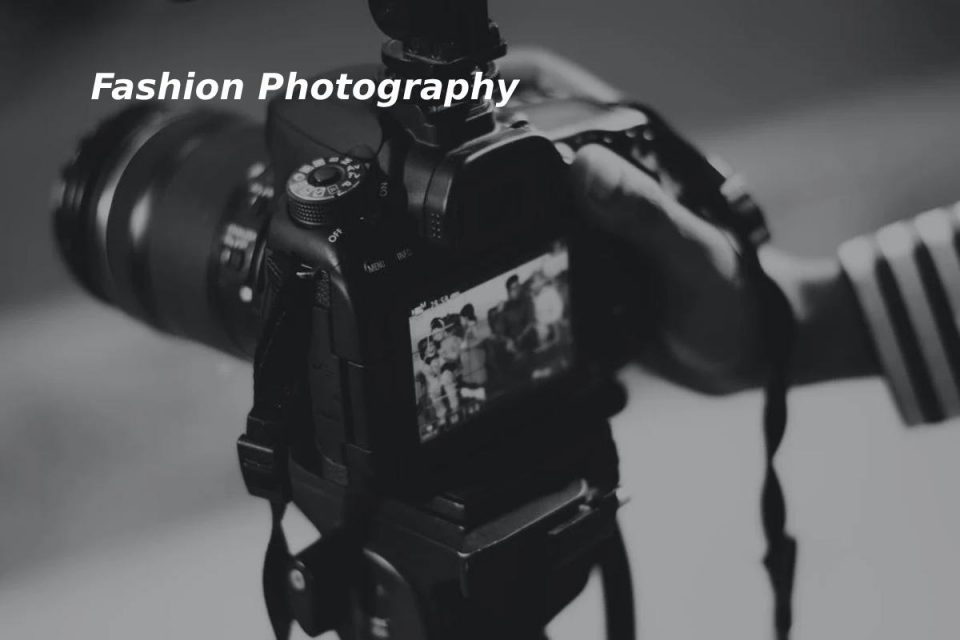Table of Contents
Introduction
The essence of fashion photography is centred on storytelling. There is no limit to possibilities regarding how they are communicated. “All the most successful fashion photographers do is have a story,” says photographer Grace Rivera.
A combination of product, personal photography, and even fine art photography, fashion photography is a kind where art and commerce meet. “There’s a wide range of fashion photography – e-commerce style with studio lighting, outdoor photography in the desert, or on the streets of New York City.”
The greatest part is that you can change the narrative whenever you need. There are no rules but to have a story in mind.” Delve into these guidelines from experts to start discovering this art form.
Before you pick up the camera for Fashion Photography
Start your journey with some research to see what fashion photography professionals do. It will help inspire you and create a vision of your shots’ appearance. Planning changes everything N’Gla says: “Images always look better when coordinated and feel intentional.”
Before she started photography, Najla’s eyes were glued to fashion magazines – not only Vogue but also lesser-known publications – with innovative street style and editorial fashion images. Spend some time looking at inspiring photos of you, browsing websites with interesting product shots, and navigating channels like Instagram. “You have to look at the pictures to see what you find attractive in the photo industry, and then you can figure out how to do it your way,” she says.
ALSO READ: NAILS
Make a mood palette and a list of shots
Create a collection of inspiring images and list every photo you want to take. Look at these during filming to ensure you’re still in the lead. They like to write specific qualities that they can refer to, such as “earthy” or “bright. ” Color theory is also critical.”
The fashion photography profession may have a variety of themes, from product photography for sale online to studio shots or lifestyle photos of wearable clothing (as in the brand’s search book) or even high-fashion editing with models and make-up artists (as in vanity fair or Harper’s Bazaar pages). However, the ultimate goals vary, and these photography tips are helpful to get started.
Make the models comfortable
It’s essential when you work with models to make them feel comfortable. It is the basic principle of portraiture. Spend time working with a new person to break the deadlock and get to know him. “The beauty of fashion photography shows that people are of their nature,” says N’Djala. Practice photographing someone close to you before working with models. Note how you need to guide them to get the shots you want. Try to get explicit footage in guard moments.
Place value on design and product Quality
The quality of the clothes will appear in the footage. “Whether you like it or not, the clothes tell us how the picture looks and feels,” says N’Djala. Also, pay courtesy to the design of the clothes. How does the model wear it? Are there wrinkles? Are there more exciting collections of dresses to try? “You can have the best lighting and location, but if the design isn’t good, it won’t work,” Rivera warns.
Tips for Fashion Photography
All you need to start other than the camera is a light source and background – even if this is a bright window and cover. A tripod can also be helpful if you’re portraying yourself as a model. Start simple and use these methods to help you progress.
The model shows the arm position
A model with closed eyes looks left.
Experiment with Light Fashion Photography
“That’s the difference between a good image and a great one.” See what you can invest in. “Photographers always have one or two strong lights and V flats,”. V flats help dissipate light from its lamp to fill the room. When Rivera started her work, they had access to a photography studio. ”
Get your Camera Settings in Order
Fashion photography is different from fine art photography and portraiture in that you may not have much space for artistic use to focus on. “People like their pictures deeply in the shallow field, but when they shoot a fashion, and the aperture is too low, the edges of the clothes may be out of focus, so they have to adjust them
Tweaking your settings is essential. “A lot of the mistakes people make are about camera settings – if they are shooting too fast and getting ahead of myself,” Rivera says. While shooting in the primary studio, where everything must be sharp and focused, try these settings and set from there:
Take Test Shots at Each Photo Shoot
Check the lighting set before your mannequins arrive. Take some test shots of yourself or stand up and make any necessary changes. It will confirm whether the lighting and camera settings are correct.
Don’t forget to stop, breathe and check your shots on the go. Also, look at your products or models for any design issues. It’s much easier for an individual to curl a stray strand of hair during filming than to try to modify it later. If you can hire a fashion designer with you, his job is to take care of these things.

